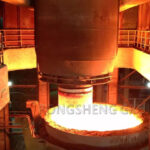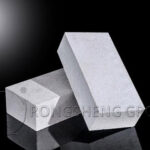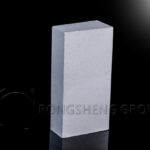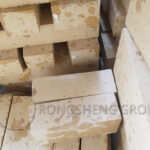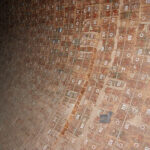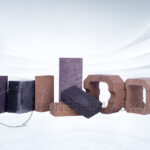Acid-resistant bricks are widely used in factories in the petroleum, chemical, food, and pharmaceutical industries because of their excellent corrosion resistance and oxidation resistance. So, what is the construction process for acid-resistant bricks? Acid-resistant brick installed. This article provides the answer to this question.
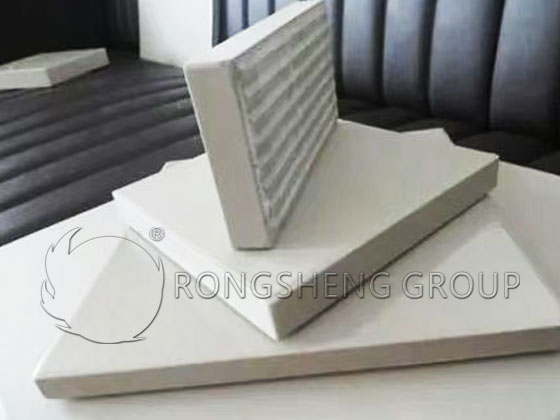
Construction Process of Acid-Resistant Bricks
- Before laying acid-resistant bricks, soak them in water and then let them air dry to achieve a dry exterior and moist interior, with no watermarks on the surface. Select the appropriate color before use.
- Before laying the acid-resistant bricks, draw cross lines in both horizontal and vertical directions. Ensure that the bricks are laid continuously without misalignment.
- Pay attention to whether the acid-resistant bricks need to be patterned or laid in a uniform direction. Cut the bricks accurately, and ensure tight joints at door frames, cabinet bottoms, etc., with even gaps.
- Clean the bricks immediately after laying, keeping them clean at all times. Use cotton yarn or sawdust to clean the brick joints and remove any cement mortar from the joints for later grouting.
- Do not walk on the laid bricks. Clean the joints within 24 hours after laying and allow them to cure.
- After the floor tiles are laid and inspected for integrity, completely cover and protect them with thick cardboard. Remove any nails from the cardboard. To prevent debris from entering, the cardboard sheets must be sealed tightly together with adhesive tape.
- Do not use water in the absence of drainage or water-collecting systems. Never soak the cardboard protecting the floor tiles to prevent indirect contamination.
- Grouting should be done before completion. First, clean the grout lines. Use white cement mixed with talcum powder to make grout, applying it 1mm below the tile surface.
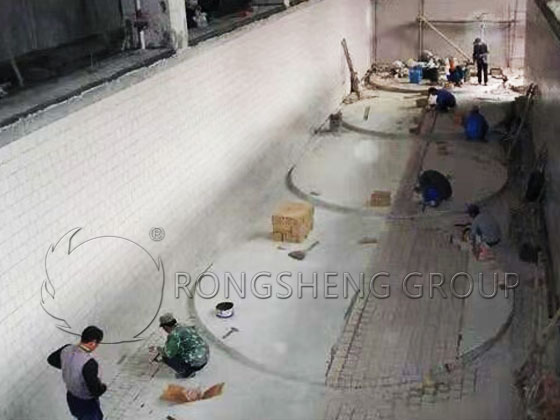
What are the requirements for substrate preparation before laying acid-resistant bricks?
Substrate preparation is a crucial step in ensuring project quality before laying acid-resistant bricks. Specific requirements are as follows:
- Substrate Flatness and Strength
Flatness: The substrate surface should be flat. Using a 2-meter straightedge, gaps should not exceed 5 mm. Uneven areas must be repaired with cement mortar or a specialized leveling material.
Strength: The substrate should possess sufficient strength and stability, free from defects such as sandblasting, cracks, and honeycomb pitting. For concrete substrates, the surface should be firm and dense, and the compressive strength must meet design requirements.
- Substrate Cleanliness
The substrate surface should be free of oil, dust, loose ash, cement residue, and other impurities. Cleaning methods such as sandblasting, wire brushing, or high-pressure water jet washing can be used to ensure the substrate surface is clean and dry. For areas with heavy oil stains, a specialized cleaning agent should be used for degreasing to thoroughly remove any residue.
- Substrate Moisture Content
The moisture content of the substrate should be controlled below 6% (or according to design requirements). If the moisture content is too high, dehumidification measures such as ventilation, drying, and heating are necessary. This prevents the acid-resistant bricks from becoming hollow or falling off due to moisture evaporation from the substrate.
- Corner Treatment
Internal and external corners should be rounded or beveled to avoid stress concentration caused by right angles, which can affect the bonding effect of the acid-resistant bricks. The radius of the rounded corner or the size of the bevel must be determined according to design requirements.
- Substrate Slope
If the design requires a drainage slope for the substrate, ensure that the slope meets the design requirements and the slope direction is correct. This prevents water accumulation from corroding the acid-resistant bricks.
- Substrate Defect Repair
For defects such as cracks and holes in the substrate, fill them with acid-resistant mortar or specialized repair materials. The repaired surface should be smooth, dense, and free of hollow areas or cracks.
- Substrate Surface Treatment
A layer of interface agent or primer can be applied to the substrate surface to enhance the adhesion between the substrate and the acid-resistant bricks. The interface agent must be compatible with the acid-resistant brick adhesive material, and the application should be even and without omissions.
- Environmental Conditions
The ambient temperature for construction should be between 5℃ and 35℃, and the relative humidity should not exceed 80%. In low-temperature or high-humidity environments, heating and ventilation measures must be taken to ensure that the performance of the mortar or adhesive material is not affected.
- Substrate Acceptance
After the substrate treatment is completed, self-inspection and acceptance are required to ensure that all indicators meet the design requirements. Acid-resistant brick laying can only proceed after acceptance is passed.



